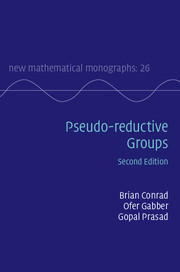Book contents
- Frontmatter
- Dedication
- Contents
- Preface to the second edition
- Introduction
- Terminology, conventions, and notation
- PART I Constructions, examples, and structure theory
- PART II Standard presentations and their applications
- PART III General classification and applications
- PART IV Appendices
- References
- Index
Preface to the second edition
Published online by Cambridge University Press: 05 June 2015
- Frontmatter
- Dedication
- Contents
- Preface to the second edition
- Introduction
- Terminology, conventions, and notation
- PART I Constructions, examples, and structure theory
- PART II Standard presentations and their applications
- PART III General classification and applications
- PART IV Appendices
- References
- Index
Summary
In addition to correcting minor errors/misprints and simplifying some proofs as well as improving some results, the major changes in this edition are: a complete rewriting of Chapter 9 (to obtain definitive results over all fields of characteristic 2), a simplified and improved exposition of Tits' results on unipotent groups given in Appendix B, and additional material C.2.11–C.2.34 in Appendix C to provide a version of the Borel–Tits relative structure theory (with relative root systems, etc.) in the pseudo-reductive case and beyond. Apart from Chapter 9, parts of §11.4, and the final displayed expression in §1.6, all numerical labels for results, examples, equations, remarks, etc. remain identical to the labels in the first edition (but the formulation of some results has been strengthened and new material has been added at the end of some sections).
We recall that pseudo-split pseudo-simple groups with non-reduced root systems can only exist over imperfect fields k of characteristic 2. In Chapter 9 of the original version of this monograph, we constructed such groups and explored their properties only when [k : k2] = 2. In the revised Chapter 9, we introduce some new ideas (especially the property that we call “minimal type”) and use them to eliminate the degree restriction, yielding a definitive treatment of such groups; when [k : k2] > 2 there arise several new phenomena with no analogue when [k : k2] = 2. For the convenience of the reader we have retained the hypothesis [k : k2] = 2 for the classification results in Chapter 10, but the results in this new edition (especially in Chapter 9) are used in [CP] to study the automorphism groups of pseudo-semisimple groups and give a complete classification of pseudo-reductive groups (in the spirit of Chapter 10) without any restriction on [k : k2] when char(k) = 2.
- Type
- Chapter
- Information
- Pseudo-reductive Groups , pp. xi - xiiPublisher: Cambridge University PressPrint publication year: 2015



